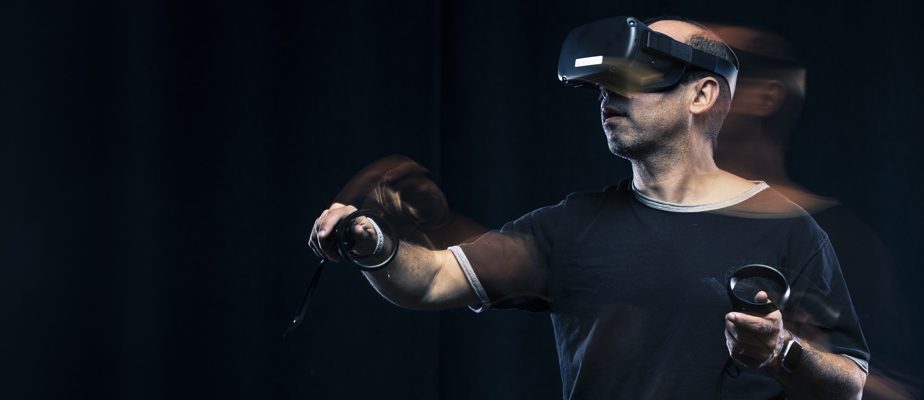(Denver, Colorado) A customer has a drink at a bar. A young woman approaches and makes eyes at him. Shortly after, a sound of broken glass rang out and another man appeared: he accused the customer of wanting to steal his girlfriend.
This scene was filmed as part of the work of criminologist Shaina Herman, from the Max Planck Institute for the Study of Crime, in Freiburg, Germany. Another version features a miscreant who burps in the face of the man, who definitely cannot have a drink in peace. These short videos are the start of a revolution called “criminology 360”.

PHOTO FROM THE JOURNAL OF EXPERIMENTAL CRIMINOLOGY
One of the scenarios of the virtual reality video used by Shaina Herman
“Traditionally, we study criminal pathologies by reading written scenarios,” explained M.me Herman on the sidelines of his presentation at the Annual Association for the Advancement of Science (AAAS) meeting in mid-February in Colorado. “But recently, it has been realized that emotional involvement is more important than expected in pathological decisions. As we know that the emotional response to a film is greater than to a written text, it seemed natural to test this avenue. »
The skits are filmed with a 360-degree camera and shown to guinea pigs in order to analyze their reactions. The camera’s point of view is that of the man who is quietly having a drink at the bar. This allows the guinea pig to watch them with a virtual reality headset and really feel like they are in the center of the action.
The first published studies using this technology, which verify that virtual reality elicits a wider range of emotions, show that the arousal response is stronger than with written scenarios. “Before we go any further, we want to be sure of what to film. As we use actors and sophisticated cameras, the cost is quite high. »

PHOTO FROM THE JOURNAL OF EXPERIMENTAL CRIMINOLOGY
One of the scenarios of the virtual reality video used by Shaina Herman
Conditional liberation
The virtual reality immersion technique is also of interest to police forces, according to Mme Herman. “For our part, we are also considering applying it to the preparation of witnesses before trials. Victims, for example, may find cross-examination very difficult. We can also think of various training courses for professions where we face delicate interpersonal situations, for example for street workers or those who work in youth centers. »
Could this approach be used to assess the risk of recidivism before parole board hearings? “Potentially, but it’s quite tricky given the consequences,” says Mme Herman. American colleagues are working on this concept, but with virtual reality animation, not with real actors like us. »
The idea of criminology 360 was launched by a Dutch criminologist, Jean-Louis van Gelder, who heads the Friborg institute.

PHOTO PROVIDED BY THE MAX-PLANCK INSTITUTE
Shaina Herman, criminologist at the Max Planck Institute for the Study of Crime
My contribution was to add different scenarios, including neutral scenarios, to better understand the interaction between emotion, arousal, cognition and decision-making processes.
Shaina Herman, criminologist at the Max Planck Institute for the Study of Crime
What is the difference between emotion and excitement (arousal) ? “Emotion is what we can name, excitement is a more biological state, more difficult to describe in questionnaires. It’s not technically an emotion, more of a state. When the young woman makes eyes at the subject, it puts him in a state where he is potentially more likely to react impulsively to provocations from other men. »
Burglaries
A next step in using criminology 360 is to test interventions that alter pathological decisions related to certain arousal states. “If we can increase the fear of consequences, such as arrest by the police, it could cause people with emotional control problems to retreat when confronted with confrontations, even in situations of altering arousal. their cognitive abilities. »
Another possibility is to identify environments more conducive to crime. “We could put thieves in a 360 video of a neighborhood where they have to commit a burglary, and identify the factors that make them choose one target over another. Is it the absence of light? A hedge that protects people from prying eyes while they break into a residence? Currently, studies of this type depend on visual analyzes of the characteristics of the houses in question. But there are burglaries that go unreported, others that abort. So we don’t have all the relevant data. »

PHOTO FROM THE JOURNAL OF EXPERIMENTAL CRIMINOLOGY
During viewing, the guinea pigs are asked questions about their level of anger or other emotions and states of excitement.
Stereotypes
The scenarios used so far use situations that could be described as stereotypical, for example the young woman who makes eyes. There is no place for homosexuality, for example. Isn’t that a problem? “We are aware of this and addressed this issue during our appearance before the research ethics committee. We can only have one version at the moment, for financial reasons. Since in 85% to 90% of cases, women are the victims of men’s violence rather than the other way around, we have favored this scenario. »
Could artificial intelligence help identify the most useful scenarios for studying human reactions? “It is certain that AI will eventually have its place, but AI-based criminology is not my field. However, I think what we are doing now will be useful for my colleagues who use AI. »
Learn more
-
- 80%
- Proportion of partial parole applications approved by the Parole Board of Canada in 2019-2020. 41% of requests for full parole were approved during the same period.
Source: Parole Board of Canada
